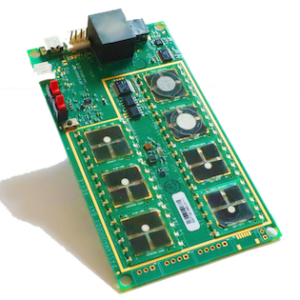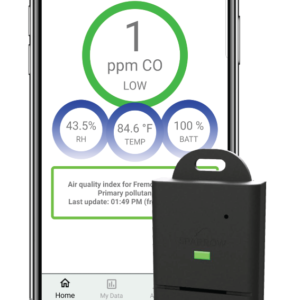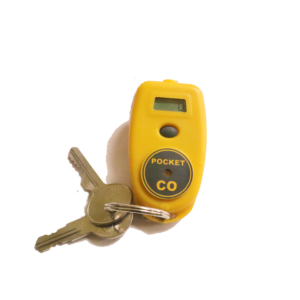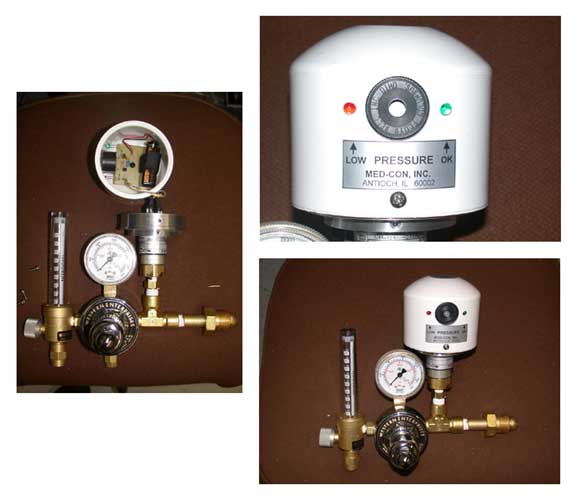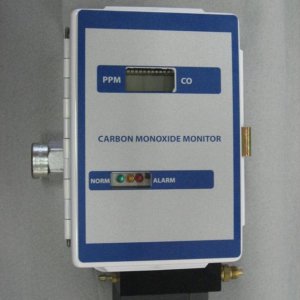Filed: 8/13/14 at 2:01 PM
Sniffing out illegal wads of cash will soon become easier for border patrol guards with the development of a new device that aims to stem the illicit flow of roughly $30 billion in U.S. currency into Mexico every year.
The Bulk Currency Detection System (BCDS) is a device that can smell money by taking a gas sample from wherever officers think the money might be hidden, be on it travelers, in their luggage or stored somewhere in vehicles or shipping containers. Using sensors, the device can analyze samples in less than a minute, researchers say.
“Everyone knows the smell of money, especially fresh money,” Joseph Stetter, principal investigator for the study and president of KWJ Engineering, says. U.S paper money omits unique gases and leave its own “fingerprint,” a result of the ink used in the printing process and the paper the bills are printed on. Money sheds “volatile molecules,” the kind molecules that most easily travel through the air and stick to surfaces, Stetter says.
That distinctive smell of American money will be measured by analyzing molecules using a combination of detection techniques including gas chromatography/mass spectrometry (GC/MS), a method currently used to detect drugs and explosives. This way, the device will be able to smell and root out illegally large amount of U.S. currency.
“There’s a plausible reason that you can sniff out money if you can measure the chemicals,” Stetter said at a recent meeting of the American Chemical Society, where he and his college Suiqiong Li presented their research on the system.
Finding clandestine cash is currently the job of trained sniffer dogs. Stetter hopes BCDS devices will mimic dogs’ sniffing functions and largely replace the specially-trained canines who have the disadvantages of being living, breathing animals that catch colds and need to take “down time” to recover. There’s also the minor issue of communication between dogs and humans, not to mention the fact that, while friendlier than machines, sniffer dogs are costly and take a while to train, Stetter says.
The Department of Homeland Security initially put out a call for ideas for money-smelling devices and KWJ Engineering answered.
“There’s always a societal need and also a practical need. The Department of Homeland Security is interested in securing the borders and one of the things that traverses across the border in packages or backpacks or other carriers is clandestine currency that’s used in illicit trades,” Stettler told. “So to stem the flow of illicit materials across the border, just as they look for guns with X-rays and things like that, they’re looking for a tool they can use to interject.”
There are challenges ahead in the develoment of the BCDS devices. One issue is differentiating between the average wad of bills (you can travel with up to $10,000 in cash before having to declare how much money you’re carrying) and the hundreds of thousands of dollars that get smuggled over the border.
It will take two to three years before the device will be rolled out into a trial period and into the hands of border patrol officers. While there are no devices on show yet and Stetter and his team couldn’t go into too much detail about the technique without “arming the opposition,” he hopes it will be something like a small portable wand that can be waved over material, allowing the flow of travel traffic at airports and ports of entry to keep running smoothly.
“It’s quite a challenge to get the sensors and the sampling system and the algorithm that’s gong to interpret the data all working together seamlessly in a real world environment,” Stetter says.
And while there are no estimates for how much money will be saved by the device, Stetter says the advantages are everywhere.
“It could spill over into other law enforcement, whether you’re looking for meth labs or illicit operations of any kind,” Stetter says.
http://www.newsweek.com/sniffing-out-smuggled-money-about-get-easier-new-device-264299

